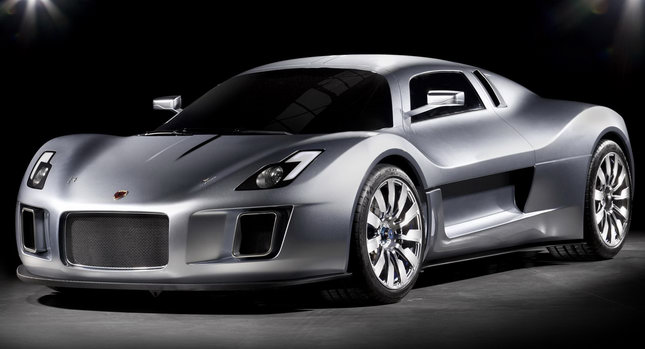The German company that brought us the extreme Apollo hypercar teamed up with Italian coachbuilder Touring Superleggera to create the Tornante, a more refined, GT-style version of the Apollo, that will go on sale in 2012.
The design and body engineering are the work of Touring Superleggera, a company which is also known for the Bentley Continental Flying Star shooting-brake. The 2-seater Tornante builds on the style of the Apollo, yet its appearance is less edgy and more luxurious.
Details that underline its Gumpert DNA, such as the huge frontal and lateral air intakes have been reshaped in a more pleasant way for the eye, while the racing-style cabin, the high-sitting rear-view mirrors and the gull-wing doors have been retained. At the rear, the Apollo’s huge wing gave way to an elegant extension of the cabin, whose main attraction is the split rear window.
Design refinement aside, Touring Superleggera also worked on improving passenger and luggage space, comfort, access and ventilation, and noise levels.
Gumpert‘s engineers used an Apollo-derived space frame chassis with the same central engine layout for the Tornante. Thanks to various weight saving measures, the Tornante tips the scales at only 1,300 kg (2,866 lb), which means its should be only marginally slower than its more extreme sibling.
It has the same Audi-sourced 4.2-liter V8 biturbo engine that has been completely reworked by Gumpert engineers, producing 700 ponies. Mated to an automatic six-speed gearbox that changes gears faster than the blink of an eye (40 milliseconds), the unit produces a hefty 900 Nm of torque (663.7 lb-ft) at 4,000 rpm. Performance figures have not yet been revealed, with Gumpert only saying that the car can reach speeds of over 300 km/h (186 mph).
By Dan Mihalascu
TECHNICAL DATA
2-seater sports car with a mid-engine arrangement, chrome-molybdenum steel chassis with an integrated safety cell, doors and the boot lid open with gullwings, carbon body, 100 l stainless steel tank behind the passenger cell with integrated catch tank, long and pushrod-operated double transverse control arm suspension with fully adjustable dampers front and rear and anti roll bar in front, ground clearance adjustable between 60 and 140 mm, two circuit ABS brake system with six piston callipers, inside ventilated discs (378 x 32 mm) at front and rear.
Dimensions and Weight
Length – 4,475 mm
Width – 1,971 mm
Height – 1,215 mm
Wheelbase – 2,700 mm
Track front / back – 1,648 / 1,600 mm
Boot volume – ca. 200 liters
Kerb weight (depending on equipment components) – 1,300 – 1,400 kg
Engine
V8-cylinder-Biturboengine with 90° cylinder angle, Closed-Deck light metal crankcase, light metal cylinder heads with five valves per cylinder, four overhead camshafts, variable time of ignition (Vario Cam direct) on the intake, hydraulic valve clearance compensation, dry sump lubrication, double-flow exhaust system with 3-way catalytic converter, four Lambda probes for gas mixture and diagnostics, On-board diagnostic system, 2 Intercoolers, electronic ignition with a rested ignition distribution (eight ignition coils), sequential multipoint fuel injection, electronic accelerator system (drive-by-wire)
Cylinder / type / valves per cylinder – 8 / 90°-V/5
Cubic capacity – 4,163 cm³
Stroke – Bore – 93 / 84,5 mm
Nominal output (kW / HP at rev / min) – 515/700 at 6,500
Max. torque (Nm / lb ft at rev / min) – 900/663.7 at 4,000
Maximum rev – 7,400 rpm
Litre performance (kW/l / HP/l) – 123.7 / 168.1
Compression / recommended fuel type – 9.3 / 98 ROZ / 88 MOZ
Emission standard – Euro 5
Gearbox – Automatic six-speed gear box TT40e with synchronization and oil cooling, operated with paddle shift controls, twin plate clutch configuration (diameter 240 mm), Torsen differential lock
Wheels/Tires – Michelin Pilot Super Sport front 265/35 ZR19, back 345/30 ZR20
Wheel dimension- front 10 J, back 13 J
Wheel rim type – Aluminum cast or forged wheels with centre lock
Performance Figures
Top speed (est.) – above 300 km/h (186 mph)
_______________________________GALLERY_______________________________


























